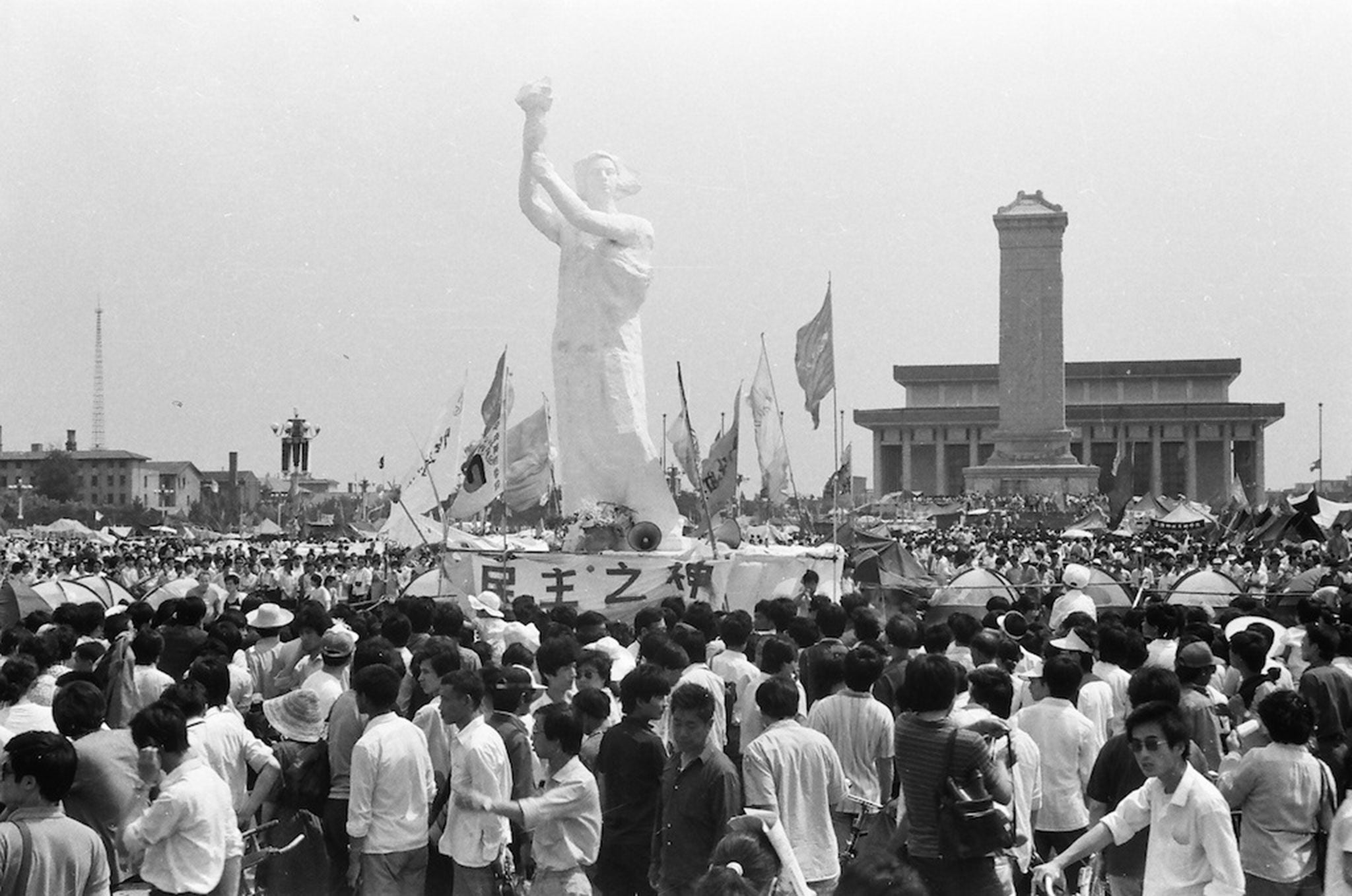Never-before-seen photos of Tiananmen Square in the lead-up to the massacre
Shelley Zhang discovered the images contained within a black film canister in an old shoebox belonging to her parents

Your support helps us to tell the story
From reproductive rights to climate change to Big Tech, The Independent is on the ground when the story is developing. Whether it's investigating the financials of Elon Musk's pro-Trump PAC or producing our latest documentary, 'The A Word', which shines a light on the American women fighting for reproductive rights, we know how important it is to parse out the facts from the messaging.
At such a critical moment in US history, we need reporters on the ground. Your donation allows us to keep sending journalists to speak to both sides of the story.
The Independent is trusted by Americans across the entire political spectrum. And unlike many other quality news outlets, we choose not to lock Americans out of our reporting and analysis with paywalls. We believe quality journalism should be available to everyone, paid for by those who can afford it.
Your support makes all the difference.Previously unseen photos of Tiananmen Square, taken just days before China’s bloody suppression of the pro-democracy protests, have been discovered by a Chinese woman living in New York.
Shelley Zhang was rifling through her parent’s photos for an article she was writing about her father and Tiananmen Square when she found an old shoebox on Sunday. Inside was a black film canister containing two rolls of black-and-white negatives wrapped tightly in white tissue paper.
But when Ms Zhang examined the negatives beneath a light she was amazed to find herself witness to scenes from the days leading up to the events of 3 and 4 June, 1989; one of the darkest chapters in recent Chinese history.
She subsequently took the two rolls of images to be printed: one captured a march down Chang’an Avenue to Tiananmen Square sometime between 13 and 29 May, 1989; the other captured crowds milling in front of the Goddess of Democracy sometime between 30 May and 3 June, 1989.
Unaware of the horrors to come, the individuals depicted appear buoyant and hopeful. They hold up banners, ride bicycles and pose in the sunshine.
The protests began in April, 1989, as a demonstration by university students in Beijing to mourn the death of Hu Yaobang, the reformist Communist Party chief who had been ousted by paramount leader Deng Xiaoping. They grew into broader demands for an end to corruption as well as calls for democracy. It is thought about a million people amassed in the square at the height of the demonstrations.
But soon after midnight on 4 June, 1989, soldiers backed by tanks and armoured personnel carriers fought their way into the heart of Beijing, killing hundreds of the unarmed protesters and onlookers.
The government has never released a death toll, but estimates from human rights groups and witnesses range from several hundred to several thousand.
Ms Zhang is unaware how the photos came into her parents' possession, but her uncle – who went to the square during the protests but was not in attendance on the night of 3 June - appears in one of the images, suggesting that he was the photographer.
Her discovery is particularly poignant, coming as it did on the eve of the 25th anniversary of the massacre. China allows no public discussion of the events and this year scores of police and paramilitary troops patrolled the vast plaza in the heart of China’s capital city.
Ms Zhang said of the pictures: "When we talk about Tiananmen and June 4, we often speak of memory, and forgetting. These photos have waited 25 years to be seen. So let’s take a look, and remember.”
For the full set of images visit Ms Zhang’s blog at http://thechinagirls.wordpress.com/
Join our commenting forum
Join thought-provoking conversations, follow other Independent readers and see their replies
Comments